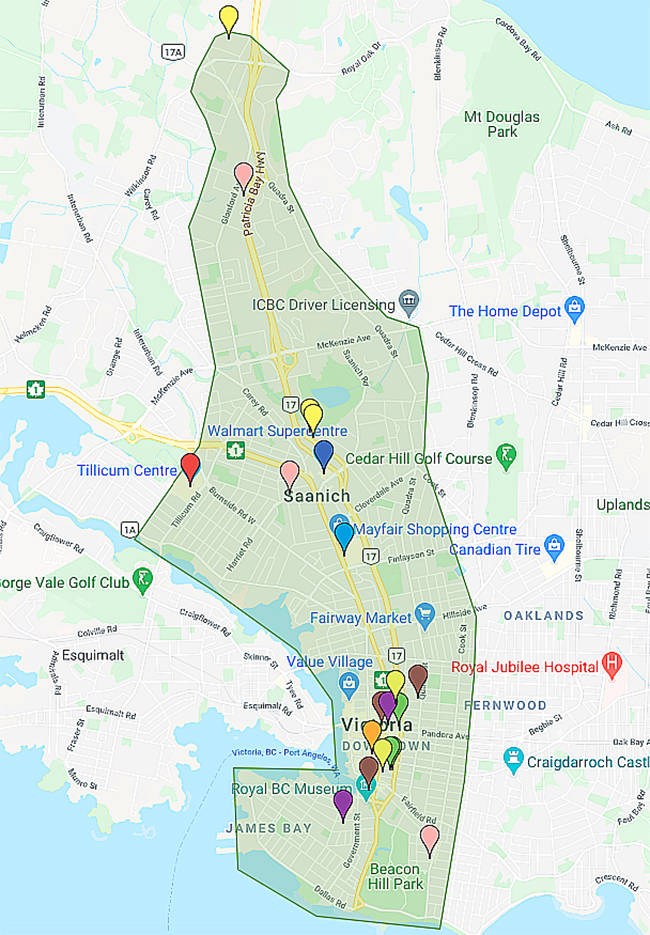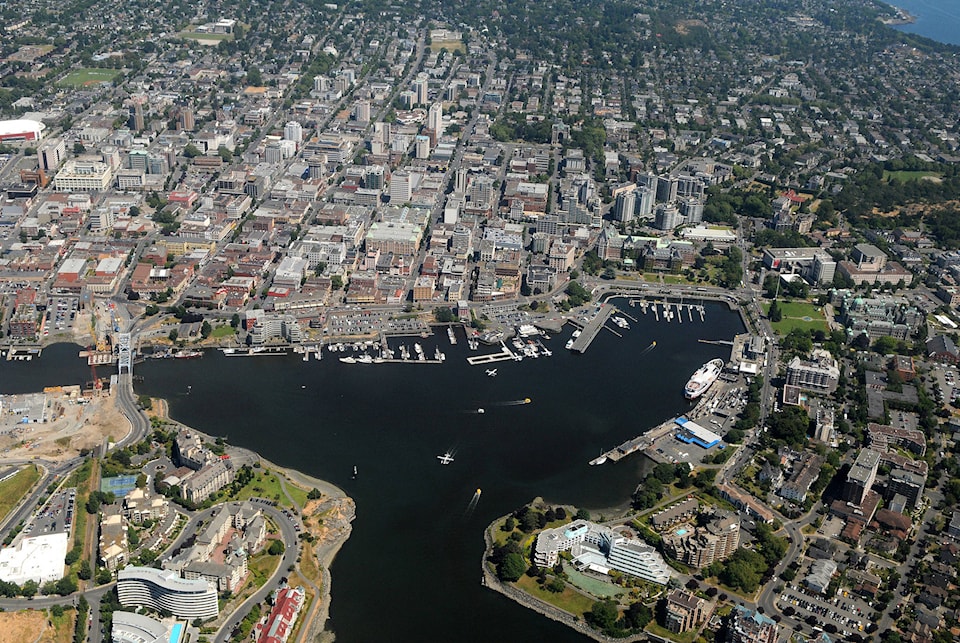A new sustainability organization is taking the concept of green buildings into the mainstream to significantly reduce the region’s carbon footprint.
Greater Victoria 2030 District is part of a North American movement that gives property managers resources and guidance to retrofit existing buildings with energy efficiency features, as an investment and marketability tool, one that also addresses climate change.
Members commit to reduce energy use and greenhouse gas emissions by 50 per cent over 2007 levels by 2030. They are also encouraged to reduce transportation-based emissions, such as making it easier for people to avoid driving.
RELATED STORY: B.C. behind on climate goals, sets new 2025 emissions target to stay on track
“The biggest value add we’re providing through the District is a long-term perspective on building performance,” said co-founder Andrew Pape-Salmon, an adjunct professor of civil engineering at the University of Victoria.
| The new Greater Victoria 2030 District encompasses a corridor through the heart of the Victoria and Saanich business and urban residential districts. (Greater Victoria 2030 District/Google Maps) |
That means encouraging and helping property managers think beyond immediate needs such as a boiler replacement or COVID-related air quality improvements, he said, instead creating a longer-term plan to improve their building’s performance in 10 to 15 years.
A partnership between the Building Owners and Managers Association of B.C., City of Victoria, District of Saanich and UVic, Greater Victoria 2030 District has a wide variety of properties on its list.
They include municipal and provincial office buildings; The Bay Centre, Mayfair and Uptown, and buildings owned and/or managed by Jawl Properties, Richmond Property Group and Anthem Properties.
Cora Hallsworth, manager of the new organization, says it is starting by helping property managers create benchmarking reports and set efficiency targets. Meanwhile, research hub partners at UVic will produce energy modelling tools to identify pathways for meeting those targets.
Hallsworth also envisions the 2030 District gaining its members group buying power for energy efficiency equipment, which provides incentive to invest in it for their buildings.
Seattle was the first of nearly two dozen 2030 District cities to seriously look at how it could do things differently to tackle climate change in a meaningful way.
ALSO READ: B.C. scientists look at climate change impacts on aquaculture production
When he first began looking into the idea, Pape-Salmon found that landlords proactively upgrading their stock were attracting a higher quality of tenant. Companies such as Amazon and others that have committed to sustainable practices tend to be willing to pay higher rents to locate in high-performance buildings, he said.
Potentially sweetening the pot for property owner/managers who might balk at the cost of upgrading to triple-pane windows or switching to more energy efficient heating is the fact the Canada Infrastructure Bank has $2 billion to use toward renewing existing buildings. While international companies might be more financially able to undertake such improvements, smaller operators might need more incentives to take them on, Pape-Salmon said.
The Bay Centre, operated by Cushman Wakefield, has long embraced a sustainability standard, said general manager Darlene Hollstein.
“We pride ourselves in adopting progressive environmental standards and practices, by continually measuring, managing and improving our environmental performance through energy, water, consumption and waste reduction,” she said. “For this reason, it brings us great pleasure to join a network of North American leaders, as a founding partner of the new Greater Victoria 2030 District …”
To learn more, visit 2030districts.org/greater-victoria.

